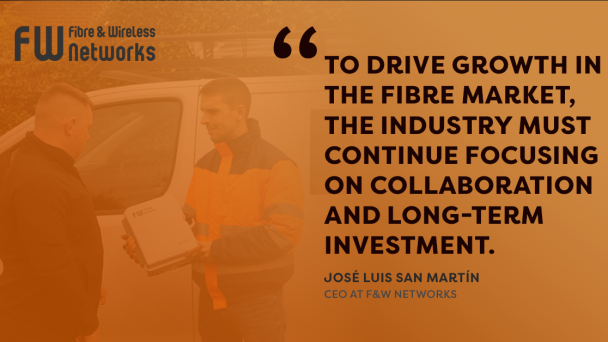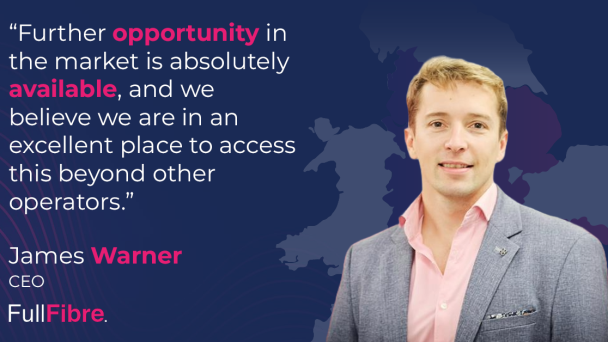Our latest Fibre Scope feature explores how can/ are altnets most effectively delivering the payback imperative and becoming profitable.

Wholesale models, portfolio diversification and tighter industry collaboration are examples of the immediate fibre sector opportunities spotlighted by speakers at the Inaugural UK Fibre Summit (11th July, Forest of Arden Hotel and Country Club).
Tapping into ISPs through a wholesale model should be central to altnet’s future strategy according to Donal Hanrahan, Director of Strategy at Strategic Imperatives. He highlighted a £490m revenue opportunity if altnets can match Openreach’s 35% penetration rate, achieved with a balanced portfolio of ISPs. “If altnets, with a current average take up of 16%, can tap into the same strong and existing brands, then they have 19% of their passed network to gain (around 2.4 million premises),” he said.
“You will never please the vast variety of people passed by your network with just one ISP. Seek a set of complementary and established brands who provide choice and can leverage their customer relationships to drive migrations and limit network churn.”
Penetration is growing in importance against the background of competition heating up. Openreach’s current 42% overbuild of altnet networks is expected to hit 93% in 2023. Hanrahan added: “Assuming a home costs £300 to pass and altnets connect one in every 6.25 homes, the cost to pass a connected home is £1,875, with a 9.2-year payback under Equinox 2 blended pricing.
“Conversely for Openreach the actual cost to pass a connected home is £857, with payback coming in 4.2 years.”
Ian Fishwick, Chairman at Airband argued that wholesaling is less of a priority for rural areas with less immediate competition with monopolies and the incumbent. “The rural and urban case studies are very different, and I believe make the term altnet redundant,” he said. “Becoming cashflow positive is a common issue for everyone under the altnet umbrella and the race is on to get there as fast as possible.”
To do this, diversifying portfolios to increase ARPU will be critical. According to Caitlin Johnston, Head of Strategic Partnerships at Gigaclear, altnet’s transitioning from build engines to sales and marketing-led organisations has prompted a re-ignition of industry alliances. “Monetising networks and gaining customers are now the two major focuses for fibre providers,” she said. “These new priorities will require a new set of partnerships.”
“As we become more customer-centric we must start partnering with suppliers that can pass benefits onto our customers. Looking from voice services to TV bundles there are lots of opportunities in the diversity of product we can offer.
Neil Wilson, Chief Product and Marketing Officer at PXC agreed that partnerships are the key for altnets to make the most out of their existing investment. He added: “Diversification with complementary products is key to growing ARPU and margins. That is why we now sell Zoom and have moved into TV. We are constantly looking for the next products we can bring to the channel, and we need to make them consumable for our partners.”
The job of altnets is to provide good bandwidth and the reason for doing so is so that customers can use it, Dan Alvarez, CRO of Vitrifi noted. “When thinking about taking partnerships to the next level, consider how you can be an enabler and add more value to customers,” he said. “We are in the market of making people’s lives easier with internet so any product that can enhance this is something you should look to add.”
Adding services can also be a play for customer acquisition, not just an APRU booster for an existing customer base. The services you look to add should be reflective of the type of customers you are hoping to win according to David Barber, Strategy Director at Zen Internet. The ISP has adapted its product set to win customers in Business Parks, which need good connectivity to make calls. “Consider your target audience and plan the services that will keep them sticky,” he said.
Education also remains a major issue in prompting take-up. Fishwick noted: “This is the largest single privately funded infrastructure programme the UK has ever seen (only HS2 is bigger and that was privately funded). We should be lauded but hardly anyone knows we are doing it.” In addressing this, tighter industry collaboration to push a collective message may be the solution.
Andrew Skipsey, Sales and Marketing Director at Spring Fibre added: “The message our industry needs to send out through the press and TV is that there is a massive investment going on. The rollout was almost an undercover activity and therefore no one knows the critical service we have made available to them. For example, as Spring finished a massive chunk of build, our local MP called to ask when the build would be started. We need to work together and push for a national name to bang the drum for full fibre.”




